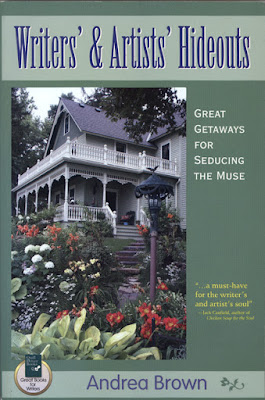 |
| Botanical Garden, Brisbane, Australia |
(April, 1999. Excerpt from my Melbourne diary, written during our three month stay in Australia.)
Last night we returned from another activity packed trip, this time to
Brisbane and Lamington National Park in southern Queensland. In the central business district of Brisbane (or the CBD as they call it) one finds turn of the century churches and other historical buildings as well as high-rise office buildings. The main shopping section, on Queen Street, has been turned into a walking mall with outdoor restaurants, entertainers, etc. Our hotel, which opened in January, was a few blocks from the shopping area and was built in about 1910 as medical offices. A few years ago the building changed hands and was restored to its original splendor (including a creaky lift) and all the doctor’s suites were turned into hotel rooms. One wonders what medical specialty our room once represented!
The Brisbane river winds its way through the city and on the south bank there is a park and arts complex. I walked across the bridge from the city center and visited the
Queensland Museum which had a number of interesting exhibits including one on the role of women in pioneer days (how they washed and cooked and stored food with no electricity or refrigeration and how the party line telephone kept people connected even when they lived long distances apart.)
 |
| Megalania skeleton (photo by Richard Hewett in my book Dinosaurs Down Under) |
At the museum there were also numerous dinosaur skeletons and fossils of other extinct animals such as the giant lizard, Megalania. There was a realistic life-size animated model of
Megalania with a warning that small children shouldn’t look if they were easily frightened. (It also had realistic sound-effects.) Megalania was a MUCH larger relative of the modern Komodo dragon and I must say that when I turned the corner to view the exhibit, I jumped. Unlike dinosaurs, this real life monster was roaming Australia at the same time as the early Aborigines and would have been a fearsome animal to encounter. The Megalania exhibit reminded me of a book I wrote called
Dinosaurs Down Under: Fossils from Australia (out of print but available online or at your library).
In another part of the museum there was an exhibit of a device invented by an early state meteorologist, a man by the name of
Clement Lindley Wragge. Although his device, a kind of giant cannon intended to seed rainclouds, never worked, Wragge is famous for being the first person to give names to cyclones (hurricanes.) According to the label on the exhibit, he named them after politicians of the day on the grounds that they were both national disasters!
One morning I drove to the
Lone Pine Koala Sanctuary, an animal park on the river about a half-hour from the city center. This was a nostalgic trip for me because that was where I had researched one of my first animal books,
Koala. Although the ownership of the park has changed and most of the staff are new since I was there in 1985, they welcomed me and gave me a nice tour. It is still one of the few places in Australia where visitors can “cuddle a koala” and, of course, have their pictures taken. I was lucky to have beautiful, warm weather and spent most of the day watching the animals, including the wild turkeys and lizards that roam the grounds and are a bit of a nuisance. I also found a mother wallaby and her joey who was cautiously exploring outside the pouch.
Note: This was actually my third visit to Lone Pine. The first time was in 1983 on my first trip to Australia when I visited with my family. You don't have to go to Australia to see the Lone Pine koalas. They now live at zoos in San Francisco, San Diego, and elsewhere. The story in my book
Koala follows a young koala born at Lone Pine who eventually makes her home at the San Francisco Zoo.
(To be continued next week with our trip to Lamington National Park.













